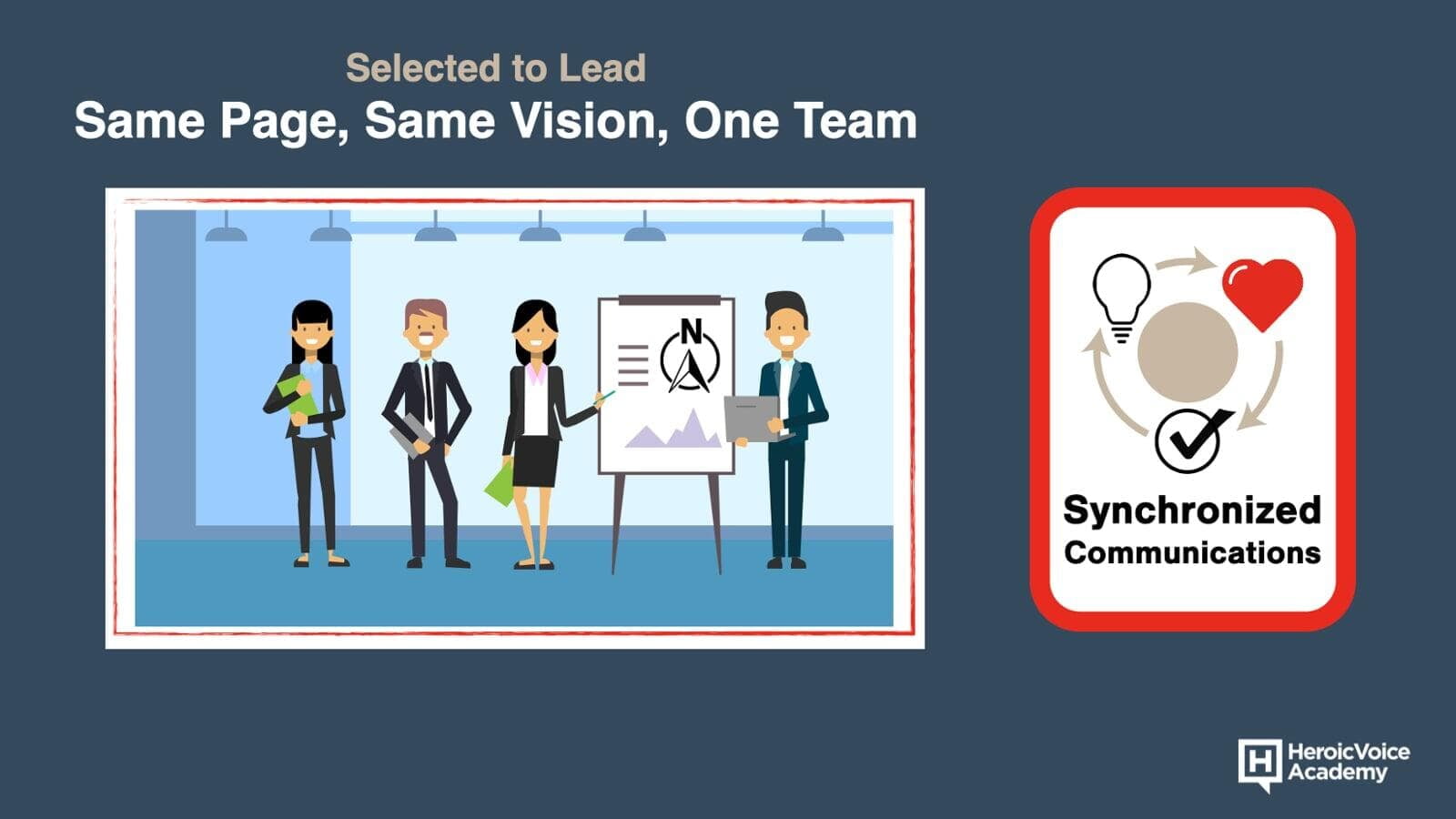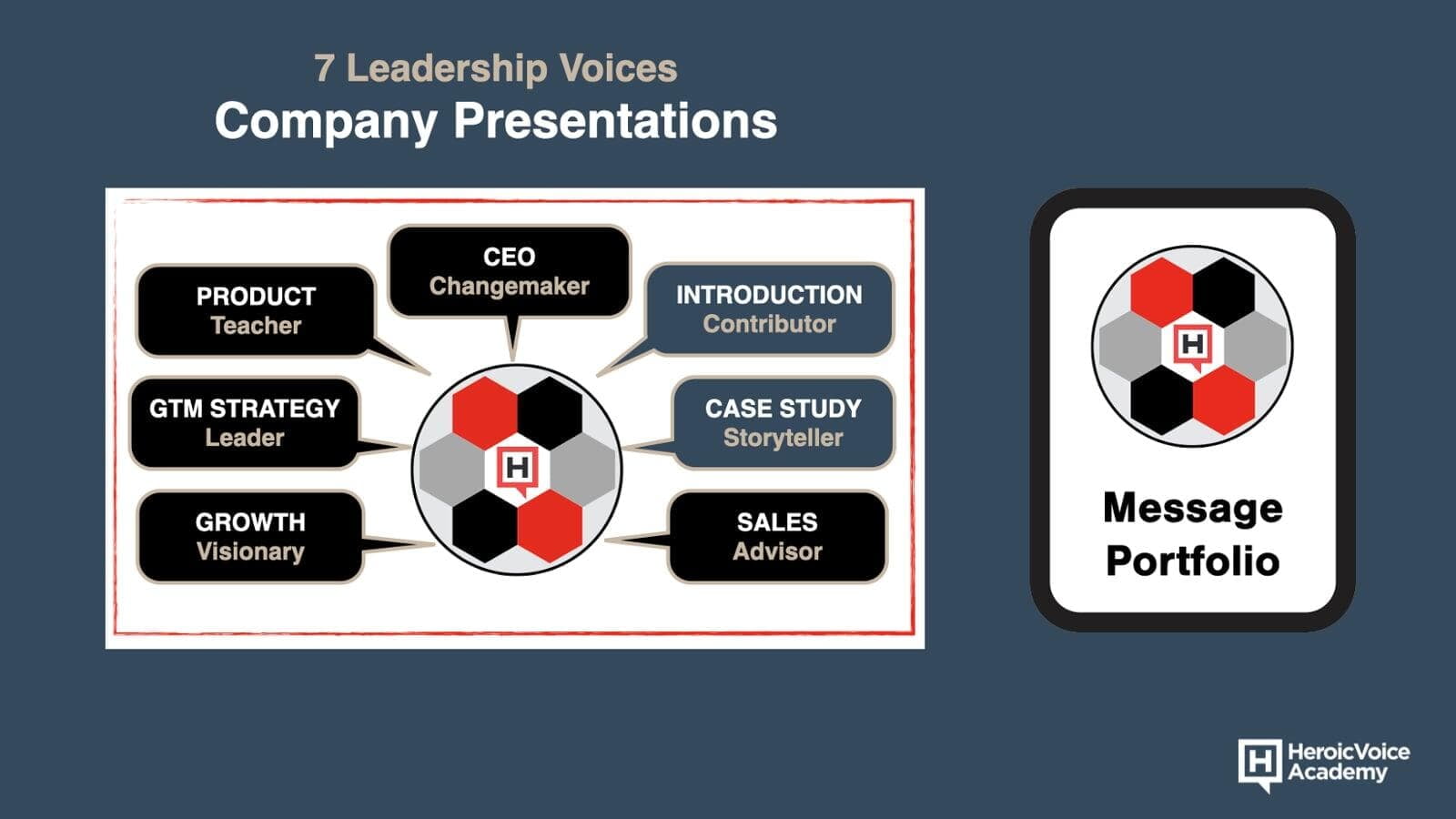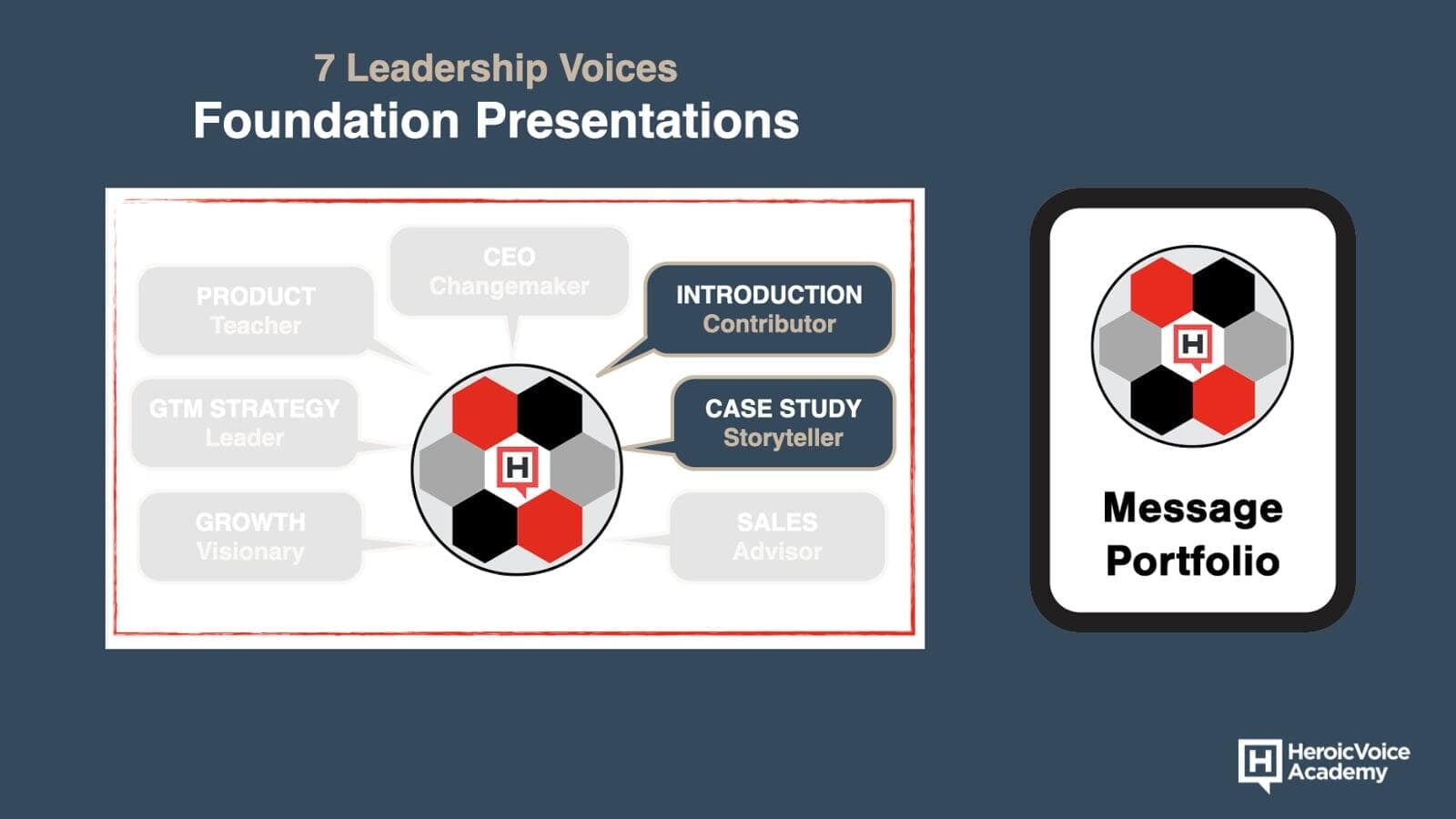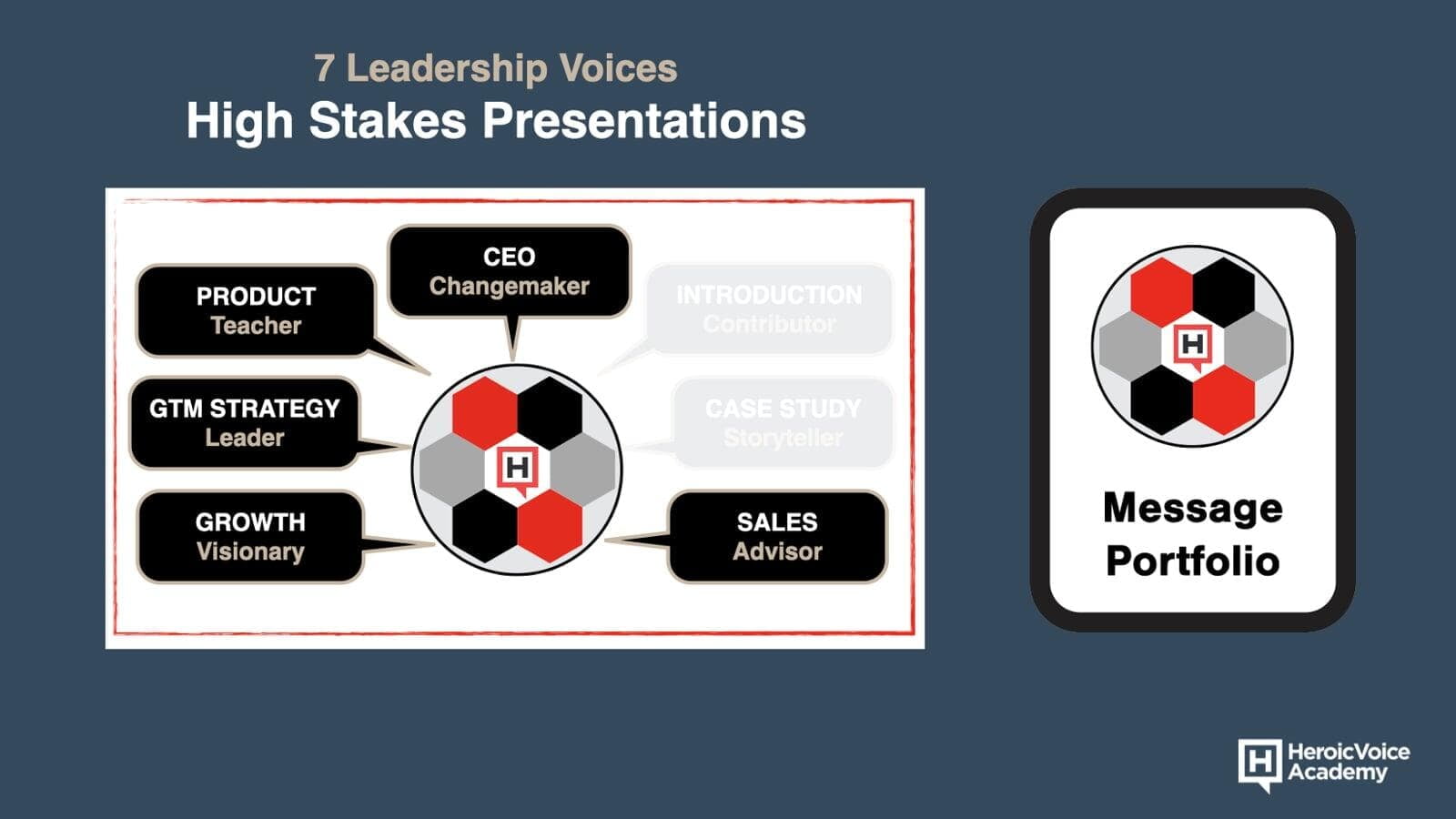
The 7 Voices of Leadership
There is more than one voice of leadership. The voice that we are most familiar with is strong, authoritative and confident. This voice is perfect for presentations to the board, journalists, analysts, and to your team members. However, these are not the only presentations a leader will be asked to make.
In this article, you will learn about the 7 voices of leadership. Each voice plays a specific role and answers a specific leadership question. Learn and master these 7 voices, and you will be fully prepared for all your high stakes presentations.

A Portfolio of Leadership Presentations
The Message Portfolio contains answers to 7 leadership questions that come up during your high stakes conversations.
- "Who are you?" You will answer this question when introducing yourself or your company. Specific situations also include the opening section of a keynote presentation or conference panel discussion.
- "When have you succeeded?" These include personal stories of overcoming adversity and company case studies.
- "Which do you recommend?" Popular applications are sales presentations, recruiting conversations and budget meetings.
- What is Possible?" This composition is used during company brainstorming meetings or conference breakout sessions. Other situations include presentations to potential investors partners and sponsors.
- "Where are we going?" You answer this question during internal presentations such as Board Meetings and Company Town Hall Meetings. This question is also relevant to external audiences: industry analysts, members of the media, and potential team members.
- "How will we get there?" You will find this question during training presentations, and conversations with potential investors and partners.
- "Why is this important?" This composition is used for Keynote Presentations, Annual Meetings and TED talks.

The Foundation Presentations
The first two presentations are the foundation for all of your high-stakes conversations and presentations:
- "Who are you?" This question arises when you are meeting your audience for the first time. Your audience is interested in the your vision, values and vows. Use the voice of a contributor, and illustrate how you can make a difference in their lives.
- "When have you succeeded?" You audience is looking for evidence and social proof that you have a track record of success. Use the voice of a storyteller and share examples of how you've overcome adversity, reached a milestone, or achieved a mission. Stories have the power to communicate character, credibility and competency.

The Leadership Presentations
The next 5 presentations represent the leadership questions that are answered in internal events such as a company kickoff or a board meeting. They are also answer in external events that include analyst presentations, client conversations, and media interviews.
- "Which do you recommend?" When confronted with a problem, your audience will be exploring potential solutions. Speak with the voice of a trusted advisor. Establish trust by first acknowledging the solutions provided by your industry and your competition. After sharing an unbiased and trusted perspective, share the merits of your solution.
- "What is Possible?" This question is often asked in meetings focused on brainstorming new ideas, designing new products, or creating new solutions. Speak with the voice of a visionary to spark imagination, inspiration and creativity in your audience.
- "Where are we going?" During times of uncertainty, this will be a central question from your team, your company and your industry. Speak with the voice of a leader, who has a crystal clear vision of the direction and destination for their audience.
- "How will we get there?" In training events, your audience is there to learn how to solve a specific problem. When you speak with the voice of a teacher, you empower your audience with the knowledge and skills required to complete a task, achieve a milestone, reach a destination.
- "Why is this important?" This question is the focus of keynotes delivered at industry conferences, TEDx events, and company kickoff events. Speak with a voice of a changemaker, to move the audience from seeing problems to seeing possibilities. Shift their emotions from feelings of doubt to feelings of confidence.

Summary
Each voice plays a specific role and answers a specific leadership question. Learn and master these 7 voices, and you will be fully prepared for all your high stakes presentations.
- Who are you? - Contributor
- When have you succeeded? - Storyteller
- Which do you recommend? - Trusted Advisor
- What is possible? - Visionary
- Where are you going? - Leader
- How will we get there? - Teacher
- Why is this important? - Changemaker
Synchronize Your Voices of Leadership
Synchronize Your Voices of Leadership
To synchronized your voices of leadership, consider joining our Synchronized Communications MasterClass. Over the course of 12 sessions, your team will develop a Habit of Practice and an Ecosystem for Practice. The goal for each leader is to be Fully Prepared for their most important presentations and conversations.
Schedule an appointment with one of our executive communications coaches, and learn how the MasterClass will prepare you to generate money, support and reputation from all of your leadership presentations.
